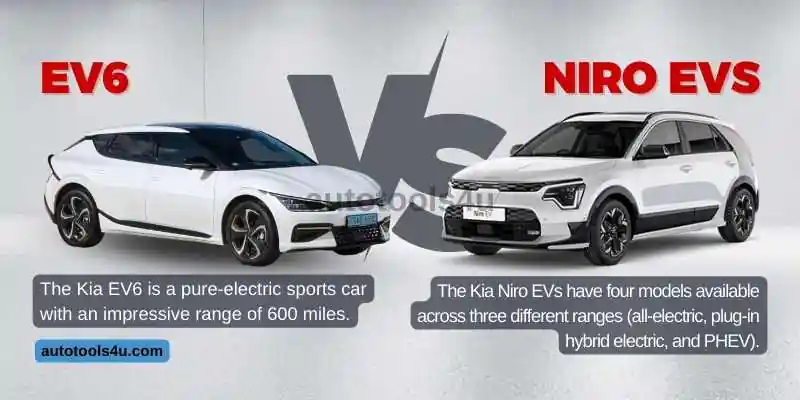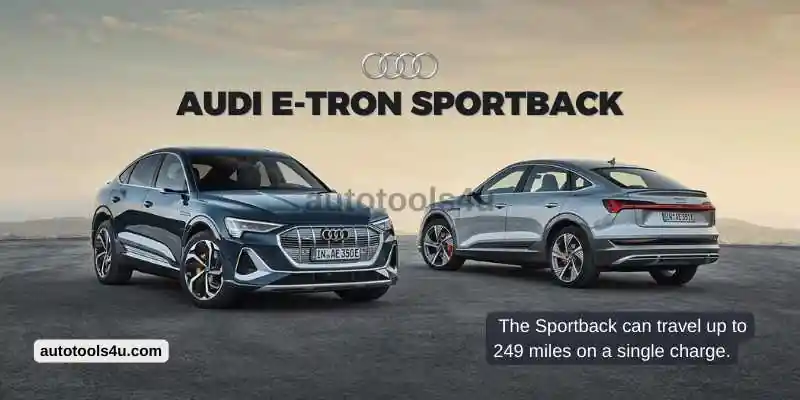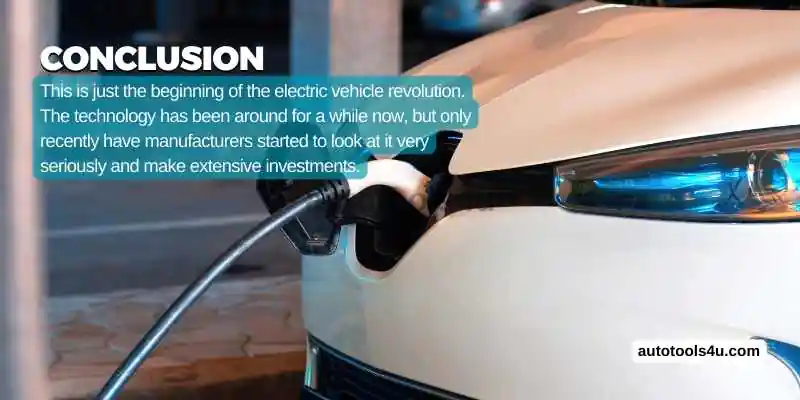The electric vehicle market is developing at an aggressive speed. The number of electric cars on the road has increased in recent years and it will continue to grow. In this post, we’ll explore some of the developing scene with all-electric vehicles in 2022 and the coming years.
All-electric vehicles – Urban Application
All-electric vehicles are becoming more popular. These vehicles are more environmentally friendly, they’re more efficient, they’re less expensive to operate and they’re also a lot of fun to drive! All-electric vehicles are generally found in urban areas because their range is limited compared to conventional cars.
Chevrolet Bolt: what to expect
One of the most common questions people ask is “What can I expect from my Chevrolet Bolt?” The answer to this question is simple: you can expect a lot more but be conservative at the same time. The car has a range of over 400 miles and it was first introduced in 2016. It’s available in all 50 states, so even if you live far away from where they manufacture these cars, they’ll still deliver it right to your door. It also has a starting price of $37,495 (before tax) which makes it more affordable than some other options on the market today – especially when compared with equivalent Tesla vehicles which start at around $100k+. And finally, there are 3 trims available for each color (white pearl tri-coat metallic; silver ice metallic; summit white): Premier 2LT Black Edition 2LT Premier Limited Premier Black Edition
Tesla’s new model – Model Y
The Model Y is the successor to Tesla’s popular Model X, a mid-size crossover SUV, and will likely be priced between $50,000 and $80,000. It’s expected to go on sale in 2020 but only in right-hand drive markets at first.
Tesla has said the Model Y will have “the best performance of any electric SUV” with 300 miles on a single charge and acceleration from 0 to 60mph (96km/h) in 3.5 seconds when using Ludicrous mode. The company hopes it can achieve this by using its new 2170 battery cell format – it has 2% more capacity than its predecessor while being 20% smaller – which means more can be fitted into the same space as before without compromising safety or performance
Kia EV6 – Niro EVs
The Kia EV6 is a pure-electric sports car with an impressive range of 600 miles. It can accelerate from 0 to 62 mph in 3.2 seconds, making it one of the faster cars on the scene and one of the best family EV cars.
It’s also got a unique feature: a pop-up roof that you can use when you need extra headroom but don’t want to sacrifice style or performance by folding down your top. The car comes with two different interior configurations so you can tailor it to your needs, whether that’s driving solo or taking some friends along for the ride!
The Kia Niro EVs are already out in 2020 and 2021, with four models available across three different ranges (all-electric, plug-in hybrid electric, and PHEV). We are expecting some updates and configuration changes to the models in the coming years. The Niro EV comes standard with Tesla Autopilot features like lane keeping assist plus automatic emergency braking; however, if you don’t want these safety features included then there will be an option for them not installed as well as additional packages available such as driver assistance packages which include blind spot detection & rear cross-traffic alert systems
The price of this vehicle may vary slightly depending on where you live due to local taxes and fees associated with buying cars from specific manufacturers in certain areas (i.e., California). However, when buying directly from Kia dealerships across America as opposed to dealerships outside North America that sell imported vehicles such as those imported from Europe or Asia will often give consumers access to much lower prices than buying elsewhere online or offline because there are no import duties involved in those transactions that raise costs considerably for buyers abroad who want their own EVs instead of leasing them through companies like Tesla Motors Incorporated which charges customers anywhere between $539/mo – $1k/mo depending upon what kind of deal they get signed up for long term after signing up early discounts end after twelve months have passed without purchasing any products.
Subaru Crosstrek Hybrid
The Subaru Crosstrek Hybrid is a hybrid crossover SUV with a hybrid powertrain and a hybrid system. The battery pack contains the battery, which stores electricity and generates power to run the electric motor.
The battery storage capacity varies depending on what kind of EV you buy; some have larger batteries than others, but all EVs provide performance equal to or better than their gas-powered counterparts while being more environmentally friendly than them too!
Nissan Leaf and Leaf Plus
There are also a few new features for the Leaf Plus. The most notable is the longer range, which comes from a new 48kWh battery that has been designed to improve energy density and reduce weight. This battery packs more energy than its predecessor, enabling it to travel 250 miles on a single charge (versus 150 miles on an older model). Additionally, this model uses brand-new battery chemistry as well as a new motor configuration that enables it to achieve higher output while still being more efficient than before.
Ford Mach-E, Ford F-150 Electric, Ford Mustang
Ford will release a new model in 2022. Ford F-150 Electric and Ford Mustang Mach-E are two other models that are expected to be released in 2022. The Lincoln Aviator Grand Touring PHEV and Lincoln Corsair PHEV will also be released in 2022.
The company has not yet confirmed this date, but they did say that they would release an electric truck by 2021.
Ford has not stated what kind of car they will release in 2022. One possibility is a Ford electric truck, which would be similar to the Ford F-150 Electric that was released in 2020. Another possibility is an electric SUV like the Lincoln Aviator Grand Touring PHEV or Lincoln Corsair PHEV. The company did say that it would release an electric vehicle by 2021.
Volvo XC40 Recharge Plug-In Hybrid
The Volvo XC40 Recharge Plug-In Hybrid is a plug-in hybrid and the first car that Volvo has released with this technology. It is a compact SUV, and it comes with three different drive modes: Power, Pure and Save. The Power mode enables you to use the vehicle’s full power for fast acceleration, while Pure gives you increased efficiency without sacrificing performance. Save mode allows you to get between 30% and 60% of your battery charge while driving in traffic.
The battery has an 8 kWh capacity, which translates into an estimated range of 15 miles (25 km) on electricity alone before you need to start using the gasoline engine as well; however, if your trip is short enough or if you plan ahead by charging your car at home before heading out on trips during rush hour traffic then this shouldn’t be much of an issue. This means that once again we see how important it is not just what kind of battery technology we use but also how far we want our EVs able to go without needing any fuel whatsoever before switching over from being powered exclusively by “greenhouse gas-free” electricity generated through renewable sources such as solar panels placed on rooftops throughout cities like New York City.
Audi E-Tron Sportback
The Audi E-Tron Sportback is a luxury electric SUV. It has three electric motors that produce a total of 435 horsepower and 590 pound-feet of torque, which makes it capable of going from 0 to 60 mph in 4.5 seconds. The Sportback can travel up to 249 miles on a single charge and has an 85 kWh battery that takes 12 hours to fully recharge on a 240-volt home charger or 7 hours with the standard equipment onboard charger.
The E-Tron Sportback also comes with several autonomous driving features as standard equipment, including traffic jam assist (levels 1 and 2), adaptive cruise control with stop & go functionality, lane assist, and side assist with automatic braking when approaching an obstacle such as another vehicle or pedestrian.
Volkswagen ID.4
Volkswagen’s first mass-produced electric vehicle, the ID.4, will launch in 2022. With a range of over 300 miles on a single charge, it’ll be one of the most efficient vehicles in its class and its sleek design is sure to turn heads on the road.
It’s not just Volkswagen who are investing in EVs though – other companies like Jaguar Land Rover have announced that every new model they produce from 2020 onwards will be an EV or hybrid.
The electric vehicle market is attracting investment
The electric vehicle market is developing at a good pace. The market is expected to grow considerably over the next 5 years and will be worth $33 billion by 2022. This represents a 20% increase in value over that period of time.
Conclusion
This is just the beginning of the electric vehicle revolution. The technology has been around for a while now, but only recently have manufacturers started to look at it very seriously and make extensive investments. We are not saying that you should rush out and buy an electric car right away, but it is definitely something worth considering if you’re looking to save money on fuel costs or want to do your bit for the environment.
FAQ – EV in 2022 and 23
Are EVs really cost-efficient?
Electric vehicles (EVs) can be cost-efficient in the long run, depending on various factors such as the cost of electricity, fuel, and maintenance. While EVs may have a higher upfront cost compared to traditional gasoline-powered vehicles, there are alternative ways in which they can save you money over time.
However, it is important to note that the cost-effectiveness of EVs depends on your driving habits, the cost of electricity in your area, and the availability of charging infrastructure. If you frequently drive long distances or live in an area with limited charging infrastructure, an EV may not be the most cost-efficient option for you. Additionally, if you drive a lot, you may need to replace the battery sooner than expected, which can be costly. In summary, while EVs can be cost-efficient in the long run, it is important to consider your individual circumstances and driving habits before making a purchase decision.
Are EVs quick to charge?
The time it takes to charge an electric vehicle depends on several factors, including the capacity of the battery, the type of charger, and the charging infrastructure available. There are three main types of EV chargers, which include standard Household single/3 phase chargers and Rapid chargers found at some of the charging stations. The time it takes to charge an EV also depends on the capacity of the battery. The larger the battery, the longer it takes to charge.
You need to keep in mind that your EV may or may not be compatible with a Rapid charging system hence you may not be able to take advantage of the speedy charging capacity of modern electric cars. While EVs can be quick to charge with DC fast charging, the time it takes to charge an EV depends on several factors, including the capacity of the battery, the type of charger, and the availability of charging infrastructure.
Are EVs cheaper to maintain?
Yes, electric vehicles are generally cheaper to maintain than gasoline-powered vehicles. EVs have fewer moving parts than gasoline-powered vehicles, which means they require less maintenance. For example, there is no need for oil changes, spark plug replacements, or exhaust system repairs. Additionally, EV brakes typically last longer since regenerative braking can slow down the vehicle and recharge the battery at the same time, reducing wear on the brake pads.
However, it is important to note that EVs may require more expensive repairs if the battery or electric motor fails. The battery is one of the most expensive components of an EV and may need to be replaced after several years of use. However, most EV manufacturers offer warranties on their batteries, which can help offset the cost of replacement. Thus EVs can save you money on maintenance costs over time due to their simpler design and fewer moving parts.
Are EVs suitable for long-range Travel?
Electric vehicles (EVs) are becoming increasingly suitable for long-range travel due to advances in battery technology and the expansion of charging infrastructure. Many newer EV models can travel over 200 miles on a single charge, and some can even travel up to 400 miles or more. This range is suitable for most long-distance trips, especially if you plan your route and charging stops in advance. Additionally, there are many public charging stations available on major highways and in cities, making it easier to find a charging station when you need it. Some charging stations are even equipped with fast chargers that can charge an EV to 80% in as little as 30 minutes. However, it is important to note that charging times and range can vary depending on the EV model and the type of charger used. It is important to research the charging infrastructure in the areas you plan to travel to ensure that you can find a charging station when you need it.



